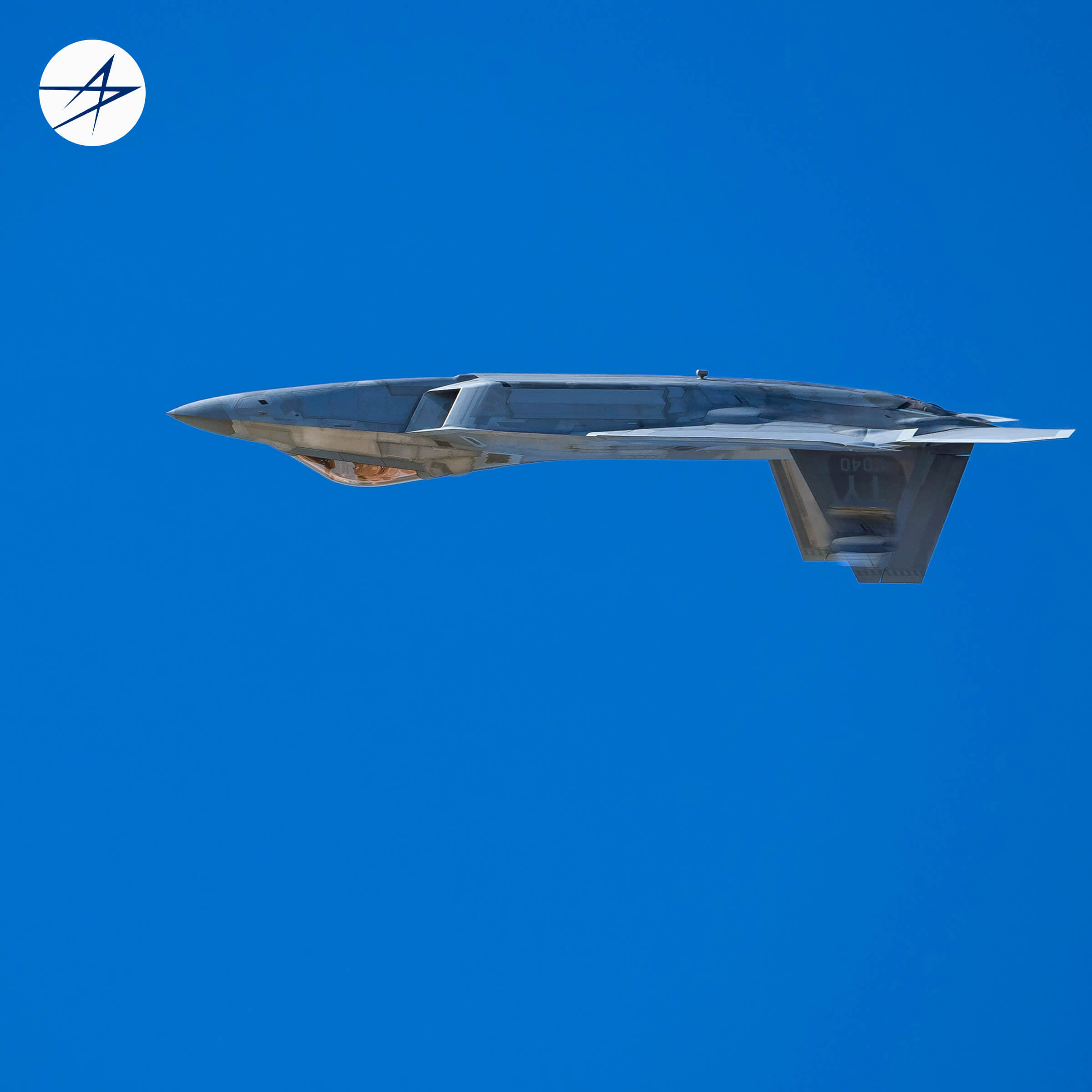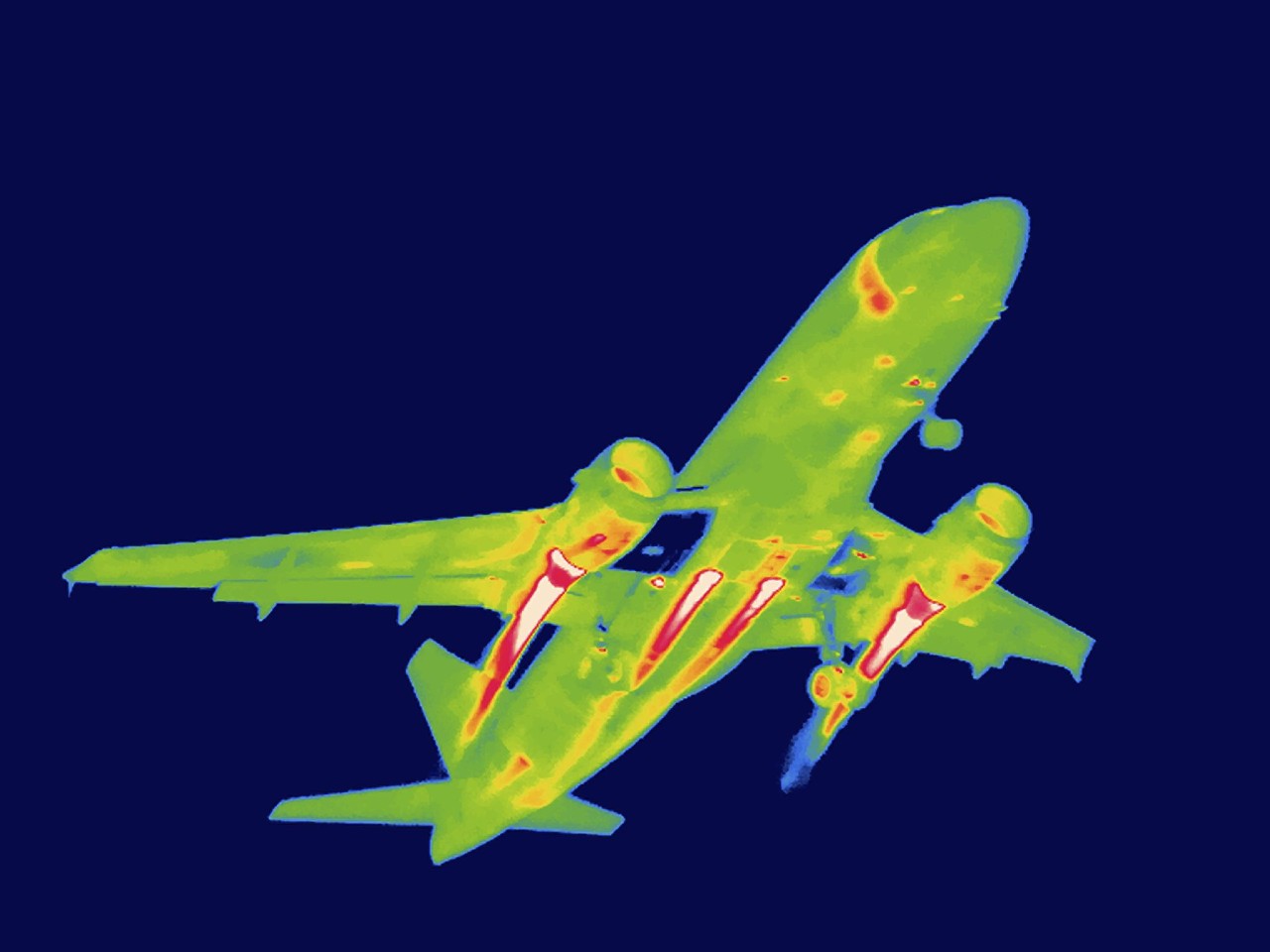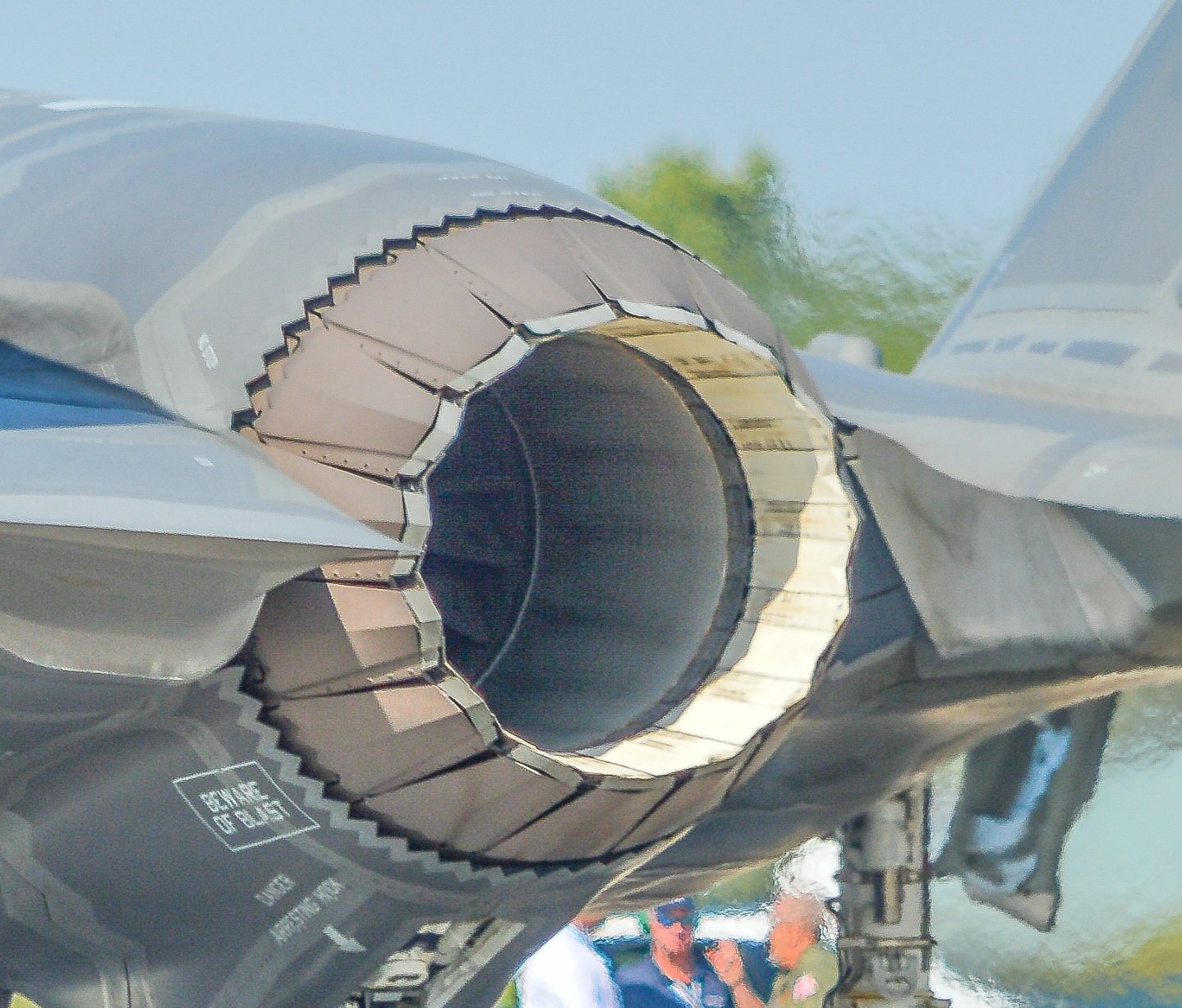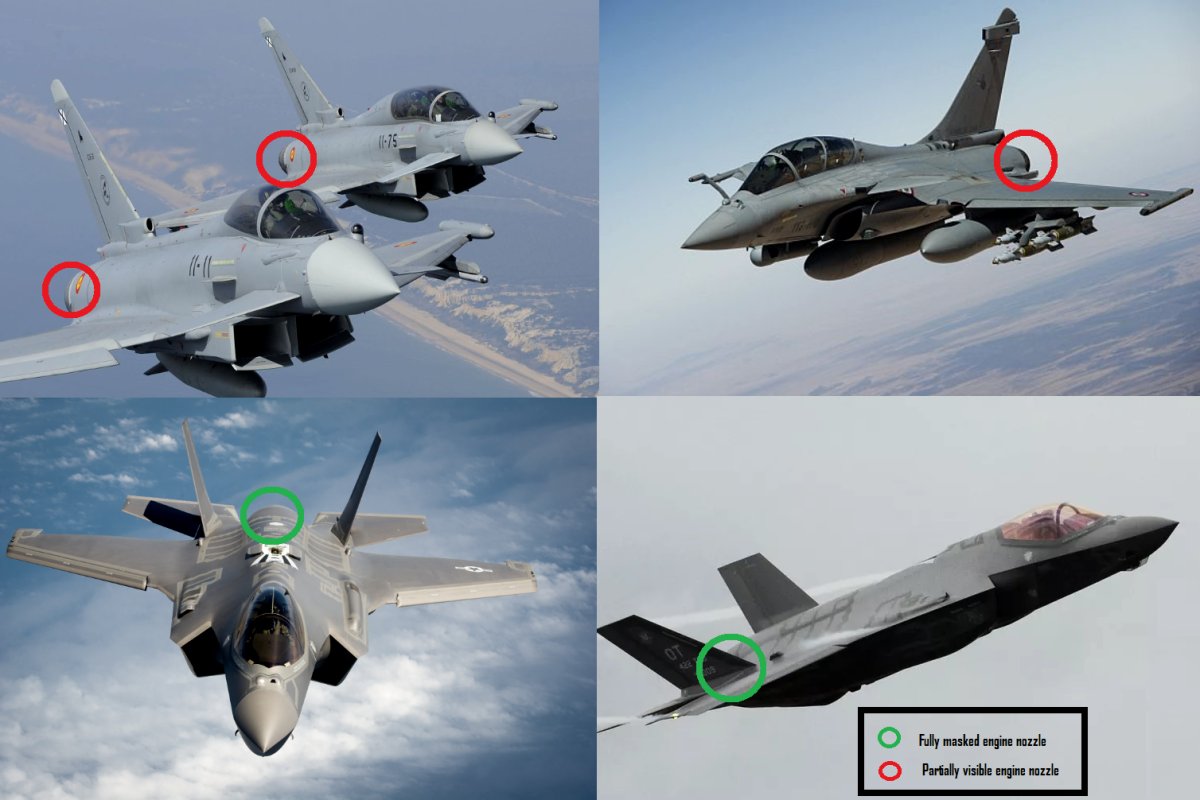After spending decades and hundreds of billions of dollars on developing stealth aircraft, countries are fast developing counter-stealth technologies such as the Infrared Search and Track (IRST) systems that are present on most of the advanced fighters being flown today.
The US was the first to field a fifth-generation stealth fighter in 2005, the F-22 Raptor, followed by F-35 Lightning II in 2015. China’s Chengdu J-20 entered service with the People’s Liberation Army Air Force (PLAAF) in 2017, while the Sukhoi Su-57 entered service with the Russian Air Force in 2020.
For over a half-century, radars have been the most critical sensors on the battlefield. While they have faced intense competition from electronic-warfare (EW) systems, nothing has challenged the dominance of radars.
This trend has prompted militaries worldwide to explore other frequencies in the electromagnetic spectrum to replace or complement the radar, and modern-day IRST systems are a product of that effort.
IRST system detects an aircraft based on its infrared (IR) signature, which comprises the heat generated from engines and the frictional heating between the air, the nose, and leading edges becoming hot as the aircraft cuts through the air at high speeds.
An IRST looks for temperature differences generated by the thermal radiations of an aircraft flying in the air at high speed against the colder ambient air.
IRST technology is entirely passive, meaning it does not give away the location of the aircraft it is mounted on, unlike search radars which emit radio waves if the pilot uses the radar in active mode to detect the enemy airplane.
Furthermore, IRST systems cannot be jammed electronically.

However, the range of detection by IR sensors is not very large because the IR waves are absorbed quickly by the atmosphere due to their relatively low energy in the electromagnetic spectrum, preventing them from reaching the IR sensors.
China Develops A Powerful IRST System
Very recently, engineers from a Chinese defense company built a small IRST system that they claimed could detect the heat signature of a high-speed mobile aircraft from a distance of 300 kilometers, an unusually long range for an IR sensor.
Counter-stealth radar technologies are one of the prime areas of research in China, particularly after an American B2 stealth bomber accidentally attacked the Chinese embassy in Belgrade during NATO’s 1999 war over Yugoslavia.
So far, China claims to have developed an IRST radar for its J-20 stealth aircraft that can reportedly pick up the signature of a US B-2 stealth bomber and the fifth-generation F-22 Raptor from 150 kilometers and 110 kilometers away, respectively.
Well, the Chinese have actually blended the IRST into J-20's skin unlike the Russians… pic.twitter.com/ESI7jW0qI4
— R A Popalzai ?? (@Radion_Popalzai) December 19, 2021
A team of engineers from a defense contractor Sichuan Jiuzhou Electric Group Company, published a paper in the peer-reviewed Chinese journal, Infrared and Laser Engineering, on August 19, claiming that their infrared system could spot and track a civilian aircraft from a distance of 285 kilometers.
The Chinese engineers also claim that their radar can scan the entire sky in a distant target-searching mode in just a few seconds, faster than most heat-seeking radars currently in use.
EurAsian Times talked to an expert to understand the viability of the claims by Chinese engineers and also to know more about the efficacy of IRST as a counter-stealth technology.

Colonel Konstantinos Zikidis of the Hellenic Air Force (HAF), who was formerly a Deputy Commander at the HAF Telecomms and Electronics Depot (ETHM), told EurAsian Times that detection ranges had been reported to be in the order of 100 kilometers for rear view (sensor behind the target) and 50 kilometers from the front against subsonic, non-afterburning fighter aircraft.
He also noted that if the target uses its afterburner and flies at supersonic speed, it would be detected at longer ranges.
“Therefore, it is hard to believe that a ground-based IRST system can detect a civilian aircraft at 285 kilometers, considering that it is subsonic, featuring high-bypass turbofan engines, mixing exhaust gases effectively with colder air,” Zikidis said.
“Even more, it is difficult to scan the entire sky in just a few seconds since the IFOV and the detection distance are quite contradictory. Finally, target identification ‘from the infrared spectrum image’ requires a different imaging mechanism, which seems quite difficult at such distances,” Zikidis added.
Stealth Aircraft Vs. IRST Technology
Most modern fighter jets have IRST systems, such as the PIRATE of Eurofighter Typhoon, the Skyward G of Gripen E/F, Optronique Secteur Frontal (OSF) system of the Rafale, the Legion IRST pod on the F-15, the AAQ-37 EO-DAS of the F-35, the OLS-30 system of the Su-30MKI, and the 101KS-V IRST of the Su-57, etc.
Glimpse of OLS-30 Electro Optical (EO)/ InfraRed (IR) Search & Track (IRST) system of Su-30MKI in action. Can track multiple targets and offer precise firing solutions when cued with Helmet Mounted Sight and short range heat seeking missiles like R-73E.
Clip by @AviationWall pic.twitter.com/Z6BVTr8su7
— Rishav (ऋषव) | ??? (@_devildog_rv_) September 12, 2021
The Infrared (IR) signature, also called the heat signature of an aircraft, comes from two main sources, which, as discussed above, include the heat of the engine and its exhaust gases (or jet efflux) and the heating of the nose and leading edges of the airframe due to friction with the air.
The engine is the most powerful source of IR signatures. Modern jet engines burn aviation turbine fuel in the combustion chamber at temperatures up to 2100 degrees centigrade. While passing through the turbine blades, the exhaust gases from the modern jet engines are said to be between 850 to 950 degrees centigrade.
When these gases reach the free atmosphere after exiting the engine’s exhaust nozzle, they have usually traveled around 1-3 meters from the turbines at subsonic speeds and are only slightly cooler.
These hot gases then spread out in the shape of an expanding cone behind the exhaust nozzle, which usually has a circular cross-section. This jet efflux is most noticeable for an IR sensor when viewing the aircraft from behind and, therefore, can be detected at longer ranges.
When viewing the aircraft from the front, only parts of the jet efflux can be seen because the aircraft is positioned between the viewer (or the IR sensor) and the jet efflux. Therefore, the detection range of the aircraft’s IR signature is also less when viewed from the front.
Modern stealth aircraft like the F-22 Raptor use rectangular exhaust nozzles with a width greater than the height, which, according to experts, restricts the ‘look angle’ into the hot engine turbine from behind. This way, the hot engine parts of the aircraft are hidden, and its IR signature comes down.

Furthermore, the exhaust gases from rectangular nozzles do not expand in a conical shape. They mix with the surrounding air faster in a roughly rectangular shape, thereby cooling down quickly and reducing the aircraft’s IR signature.
The rectangular nozzle also provides rearward stealth to the F-22 over a reasonable radar frequency range. However, it is also very expensive, which is why it is not used on other stealth platforms like the F-35, Su-57, and the J-20, which prioritize frontal stealth over rearward stealth due to cost issues.
The F-35 uses a serrated circular exhaust nozzle to enable faster mixing of exhaust gases with the surrounding air, thus reducing the IR signature. Serrated nozzles can reduce exhaust plumes by 40% compared to conventional circular nozzles.

The F-35 exhaust system also uses a cooled turbine face blocker to block the view of the turbine and cooling vents in the exhaust nozzle that allows the cooler air to come from outside. Both of these measures can reduce the rearward IR signature of an aircraft.
Moreover, stealth aircraft are designed so that their tail components minimize the angle from where the engine nozzles are directly visible, making it difficult for the IR sensors to view the exhaust nozzle from the frontal and side angles or even from elevated angles.

Also, the F-35’s F-135 engine has a higher bypass ratio than most fighters’ engines, including the F119 engine of the F-22. A higher bypass ratio means more air flows around the engine (bypass air) than the air flowing through the engine’s core, and this cooler bypass air mixes with the exhaust gases, thus reducing the temperature of the jet efflux.
In recent years the F-22, the US Navy’s F-35, and even the F-117 have been spotted with mirror-like metallic coatings that are thought to reduce the IR signature of the aircraft from the frontal and side hemispheres without compromising the aircraft’s Radio Frequency (RF) stealth capability.
However, it is not exactly clear how these mirror-like reflective surfaces reduce the IR signature. Therefore, EurAsian Times asked Colonel Zikidis what he thought about these coatings.
He explained that, generally, a mirror would also reflect infrared radiation, “so a mirror-like coating would help to minimize solar and terrestrial reflections, reducing the IR signature of the aircraft from the front and side aspects.”
Nevertheless, any aircraft flying into the air unavoidably emits thermal radiation, and if it generates enough temperature difference against the cold background, it can be detected by IR sensors.
- Contact the author at tanmaykadam700@gmail.com
- Follow EurAsian Times on Google News




